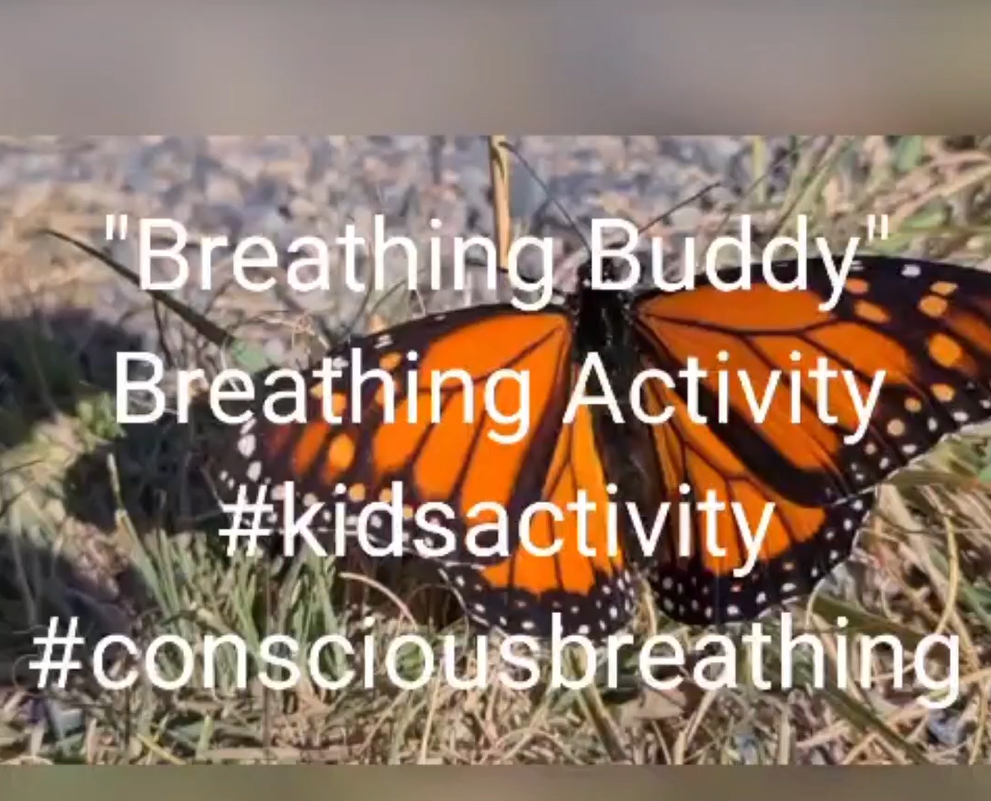Educator Skills Training
BREATHING TRAINING BLOG SERIES
Unveiling the Power of Conscious Breathing for Educators
Title: The Educators Toolkit
Lesson 7
Introduction:
Amazing. You made it this far through our conscious breathing learning for Educators. The following content enables you to practise all that you have learned through the series.
Educators Toolkit
- Self-Assessment Tool: Breathing Awareness Check
Purpose: The Self-Assessment Tool is designed to help you understand your current breathing patterns and identify areas where improvement may be needed. This self-awareness exercise serves as a starting point for enhancing your conscious breathing practice.
How to Use:
- Download the Self-Assessment Tool from the toolkit.
- Find a quiet and comfortable space to sit.
- Follow the instructions on the tool to rate your breathing habits based on the provided scale.
- Be honest and reflective in your responses.
How to Instruct Others:
- Share the Self-Assessment Tool with your colleagues or students.
- Encourage them to find a calm place to complete the assessment.
- Emphasize the importance of accurate and honest self-reflection.
Assessment and Review:
- Review your self-assessment results to identify areas for improvement.
- Use the results as a baseline to track your progress over time.
- Consider seeking guidance from experts or coaches to address specific breathing patterns.
- Conscious Breathing Exercise: Calm Your Mind
Purpose: This exercise introduces you to mindful breathing, a technique to enhance relaxation and focus. It’s a powerful tool to manage stress and cultivate emotional resilience.
How to Practice:
- Sit or lie down comfortably.
- Close your eyes and take a deep breath in through your nose.
- Exhale slowly through your nose.
- Focus only on your breath going in, and out through your nose.
- Inhale deeply through your nose, counting to four and hold at the top,
- Exhale slowly through your mouth, making your exhale longer than inhale.
- Continue this pattern, focusing solely on your breath.
How to Instruct Others:
- Gather your group in a quiet space.
- Explain the benefits of mindful breathing and its relevance to wellbeing.
- Guide participants through the practice step by step, encouraging them to focus on their breath.
Assessment and Review:
- Observe your own experience during the exercise.
- Note any changes in your mental state or feelings of relaxation.
- Share your observations with a coach or mentor for feedback and guidance.
- Breathing Awareness Journal: Reflect and Learn
Purpose: The Breathing Awareness Journal helps you track your daily conscious breathing practice and reflect on your progress. This tool supports your journey of self-regulation and mindfulness.
How to Use:
- Download the Breathing Awareness Journal from the toolkit.
- Set aside a few minutes each day to record your breathing practice.
- Note the time, location, and any observations about your experience.
- Reflect on how your practice is influencing your overall wellbeing.
How to Instruct Others:
- Introduce the Breathing Awareness Journal as a way to deepen their conscious breathing practice.
- Explain the importance of consistent reflection and self-monitoring.
- Encourage participants to use the journal daily and share insights with peers.
Assessment and Review:
- Review your journal entries to identify patterns and trends.
- Use the reflections to fine-tune your practice and set new goals.
- Share your progress with a coach or mentor for personalized guidance.
- Co-Regulation Game: Breathing Buddies

Purpose: Breathing Buddies is a fun and interactive activity that introduces conscious breathing to children. It promotes co-regulation and emotional awareness through play.
How to Play:
- Gather children in a circle.
- Provide each child with a small stuffed animal or soft toy.
- Instruct them to place the toy on their belly.
- Guide the children to take slow, deep breaths, (in through the nose, and out through the nose) observing how the toy rises and falls with each breath.
- Encourage them to focus on their breath and the sensation of the toy moving.
How to Instruct Others:
- Explain the purpose of the Breathing Buddies activity.
- Demonstrate how to play, emphasizing the connection between breath and movement.
- Guide participants through the activity with clear instructions and enthusiasm.
Assessment and Review:
- Observe the children’s engagement and participation during the activity.
- Note any changes in their behaviour or emotional states after the activity.
- Share your observations and insights with your team for further discussion.
- Breathing Affirmations: Positive Mindset
Purpose: Breathing affirmations combine conscious breathing with positive affirmations to foster a positive mindset and boost self-confidence.
How to Practice:
- Choose a positive affirmation that resonates with you (e.g., “I am calm and capable”).
- Sit comfortably and close your eyes.
- Inhale deeply through your nose while silently repeating the affirmation.
- Exhale slowly through your mouth, releasing any tension or negativity.
- Repeat the process for a few minutes, allowing the affirmation to uplift you.
How to Instruct Others:
- Introduce the concept of breathing affirmations and their impact on mental wellbeing.
- Guide participants in selecting an affirmation that aligns with their goals.
- Lead them through the practice, encouraging them to embody the affirmation.
Assessment and Review:
- Reflect on your experience and the feelings evoked by the affirmation.
- Consider how this practice might contribute to your daily routine.
- Share your insights with peers to inspire their exploration of positive affirmations.
Download our Educator’s Toolkit to access these practical tools and more for integrating conscious breathing into your educational setting. This comprehensive resource supports your journey towards creating a mindful and healthy learning environment.
- Breathing Break Cards: Energize and Regulate
Purpose: Breathing Break Cards offer quick and effective breathing exercises that can be seamlessly integrated into the daily routine. These exercises help children regulate their emotions and energy levels.
How to Use:
- Download and print the Breathing Break Cards from the toolkit.
- Choose a card that resonates with the current needs of the children.
- Guide the children through the breathing exercise depicted on the card.
- Encourage them to focus on their breath and the sensations in their bodies.
How to Instruct Others:
- Introduce the concept of Breathing Break Cards and their benefits.
- Demonstrate how to choose and use the cards effectively.
- Encourage educators to incorporate breathing breaks as needed throughout the day.
Assessment and Review:
- Observe how children respond to the breathing exercises.
- Note any changes in their behaviour or emotional states after a breathing break.
- Gather feedback from educators and children to refine your approach.
- Mindful Storytelling: Breathing Adventure
Purpose: Mindful Storytelling combines conscious breathing with storytelling to engage children’s imagination and enhance their mindfulness skills.
How to Practice:
- Select a children’s story or create your own narrative.
- As you read, incorporate pauses for conscious breathing.
- Encourage children to inhale deeply during exciting moments and exhale during calming moments.
- Use descriptive language to guide their attention to their breath and sensations.
How to Instruct Others:
- Explain the concept of Mindful Storytelling and its impact on children’s focus and relaxation.
- Provide examples of how to integrate conscious breathing into storytelling.
- Encourage educators to explore various stories and techniques.
Assessment and Review:
- Reflect on the children’s engagement and participation during the mindful storytelling session.
- Consider how this practice enhances children’s connection to the story and their breath.
- Share your experience with fellow educators to inspire creative storytelling approaches.
- Breathing Circle: Community Connection
Purpose: The Breathing Circle activity fosters a sense of community and connection through shared conscious breathing.
How to Organize:
- Gather children and educators in a circle.
- Begin with a few minutes of guided conscious breathing.
- Invite participants to share a word or feeling that describes their current state.
- Go around the circle, allowing each person to share their word or feeling.
How to Instruct Others:
- Describe the purpose of the Breathing Circle and its role in building community.
- Guide participants through the steps of the activity, emphasizing active listening.
- Encourage open and respectful sharing during the circle.
Assessment and Review:
- Observe the atmosphere and energy of the Breathing Circle.
- Note any shifts in participants’ emotional states or connections.
- Use feedback from participants to refine and adapt the activity as needed.
- Nature Walk Meditation: Breath and Environment
Purpose: The Nature Walk Meditation combines conscious breathing with a mindful exploration of the outdoor environment.
How to Practice:
- Take children on a nature walk in a peaceful outdoor setting.
- Instruct them to focus on their breath as they walk.
- Encourage them to match their breath with the rhythm of their steps.
- Invite them to notice the sights, sounds, and scents of nature.
How to Instruct Others:
- Explain the benefits of combining conscious breathing with nature exploration.
- Guide educators in facilitating a nature walk meditation with clear instructions.
- Highlight the importance of creating a calm and safe environment.
Assessment and Review:
- Reflect on the children’s engagement and observations during the nature walk.
- Consider how this practice enhances their sensory awareness and connection to nature.
- Share insights and nature walk experiences with other educators for inspiration.
- Breathing Reflection Circle: Deep Dive
Purpose: The Breathing Reflection Circle provides a space for in-depth exploration and discussion of conscious breathing experiences.
How to Organize:
- Gather a group of educators or peers in a circle.
- Begin with a brief centring meditation to anchor everyone’s focus.
- Invite participants to share their recent conscious breathing experiences.
- Facilitate a discussion about the impact of these experiences on their wellbeing.
How to Instruct Others:
- Introduce the concept of the Breathing Reflection Circle as a forum for shared learning.
- Provide guidelines for active listening, respect, and open sharing.
- Encourage educators to approach the circle with curiosity and authenticity.
Assessment and Review:
- Observe the depth of reflection and discussion during the circle.
- Note any insights, revelations, or connections made by participants.
- Use the feedback and shared experiences to inform future conscious breathing practices.
Download our comprehensive Educator’s Toolkit to access these valuable tools and more for integrating conscious breathing into your early childhood setting. This resource supports you in creating a nurturing and mindful environment that enhances children’s wellbeing and learning outcomes.
Take our Breathing Knowledge Quiz
Fantastic! Now that you have completed our Conscious Breathing Training Blog series, why not test your knowledge with our Breathing Knowledge Quiz!
References
- Kim, S. H., Schneider, S. M., Kravitz, L., Mermier, C., & Burge, M. R. (2013). Mind-body practices for posttraumatic stress disorder. Journal of Investigative Medicine, 61(5), 827-834.
- Malhotra, V., Singh, S., & Tandon, O. P. (2018). The effectiveness of structured diaphragmatic breathing for reducing premature ventricular contractions and improving quality of life in patients with PVCs. Complementary Therapies in Clinical Practice, 31, 180-186.
Our Services

Your Breathing Coach is
Huia Maree Hikaiti.
I have been an educator, coach, trainer and people enthusiast for most of my adult life.
This is my legacy to a profession and the future generations that no A.I or contrived interaction can replace.
Learn more about my personal philosophy by clicking here.
1 hour Virtual Workshops
Conscious breathing is the No.1 critical tool that every Australian Edcator needs in their Toolkit.
Are you a passionate, but time poor Educator looking for your next personal or professional bite-sized learning opportunity? Do Good, Be Great and create a legacy at your service with one of our Conscious Breathing Programs – or create your own legacy. We are here to support Australian Educators to learn about the power of correct, conscious breathing.
The reasons why are compelling. If have children or work in an early learning environment – you need this skill.
Follow a simple 1 hour learning path
Choose a simple test or certificate test
Access tools, downloads and templates to assist you through your program.
Your personal
Conscious Breathing Coach

No.1 most critical tool in every Educators Toolkit
Beneficial for both yourself and everyone around you!
Results in seconds not minutes when conscious breathing skills are applied. This means the same for EVERYONE
Subscribe
The No.1 critical skill.
Breathing Coach
We are on a mission to teach every single child to breathe correctly and consciously. This is the No.1 critical skill in self-regulation and the most effective and efficient way to bring your system and your being into balance.
(61+4)77853590
PO BOX 41 GLEN APLIN QLD 4381
